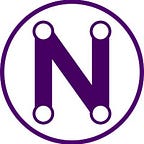Neurai Tokenomics
When Satoshi created Bitcoin, he established a reward system that halves every four years. He did this as part of an experiment to predictably determine how coins will be distributed and the maximum number of coins in circulation.
As more coins were created, other methods of distributing coins emerged, and even other systems like PoS (Proof of Stake) came into play.
Knowing the distribution of a coin is crucial to more easily determine its optimal price and this price is formed at the intersection of the highest price someone is willing to pay and the lowest price at which another person is willing to sell.
Choice of tokenomics
When we decided to create Neurai, the coin distribution had to be as optimal as possible, but defining this is truly challenging.
We could have copied Bitcoin’s or Ravencoin’s method with a reward reduction every 4 years, but doing so now doesn’t seem very useful due to the potential lack of supply during the project’s early stages.
Another option was to reduce the halving period to 2 years or even 1 year. At this juncture, we believed we had the best choice. However, having a halving every year could also be detrimental due to the abrupt drop to 50% of the reward overnight.
Here arose the idea of micro-halving: distributing approximately 50% of all possible coins within the first year and then slowing the distribution rate over time thereafter. This would allow for a substantial number of coins in circulation during the first year, preventing a supply shortage in the markets. The amount that could be mined would always be sufficient to ensure the network’s security.
After conducting various calculations and tests on Testnet, we decided to start with 50,000 coins and reduce the reward by 5% every 14,400 blocks, which equates to every 10 days.
This table illustrates the 5% reduction up until the 36th micro-halving, at which point it transitions to a gentler distribution method.
Micro-halving risks
With this distribution through micro-halving, there’s also a risk of an excess of coins in a short span of time, potentially causing significant price deviations if the mined coins are dumped onto the market without the necessary purchase volume to support the price at the time of sale.
At the time of writing this article, we are at the 13th micro-halving, where 37M coins are mined daily, lasting 10 days for a total of 370M coins. If miners decide to sell 30% of all they’ve mined, this means that the market would need to buy approximately 10M coins daily, not accounting for other potential unrelated sales.
While these price drops might seem detrimental, they are actually beneficial in the long run, as these coins get distributed, ensuring greater price stability for the project in the future.
Micro-halving 36
At the 36th micro-halving, there’s a change in distribution, and every 360 days there will be a reduction as shown in the image below.
- Micro-halving 36: 5000
- Micro-halving 72: 4000
- Micro-halving 108: 3000
- Micro-halving 144: 2000
- Micro-halving 180: 1000
- Micro-halving 216: 500
Conclusion
Finding the best distribution is always challenging due to the multitude of factors that come into play in determining the final price. However, we are confident that the chosen method is the most beneficial for the project in the long run.
But it’s important to keep in mind that this high number of coins mined in the initial phase can lead to significant price drops, but it can also present an opportunity.
